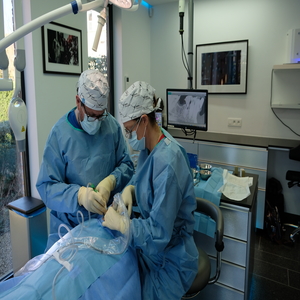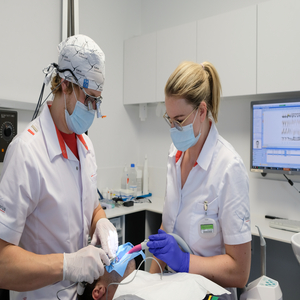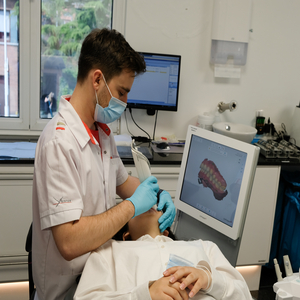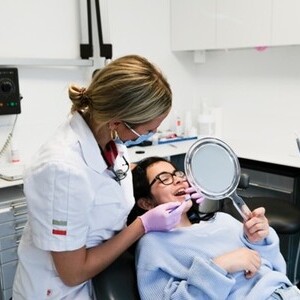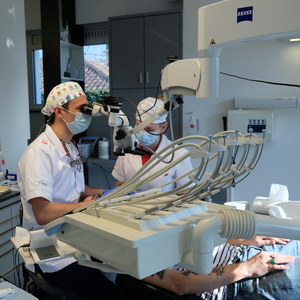Orthodontics
Orthodontics are a specific discipline that focuses on the correction of tooth position and relationship of the cheeks.
Orthodontics can be performed to both children and adults and can be advised for several purposes:
• Unfavorable tooth position compromising brushing your teeth
• Unfavorable cheek relationships which may lead to, or sustain, speech or functional problems
• Unfavorable tooth wear as a result of malpositioned dental arches and/or cheeks
• To prepare for restorative rehabilitation to enable a better tooth position for the restorative dentist in order to provide a better long time prognosis of the restorations.
Both conventional braces and removable appliances can be necessary to ensure the most appropriate treatment. Recently this was extended with clear “aligner” therapy. The orthodontist is essential to provide the correct information regarding treatment modalities.
As described above, orthodontics focuses on a stable and functional dentition on the long term. However, aesthetic corrections will be achieved as well during orthodontic treatment. Thus, a beautiful smile will certainly be a main goal too. Function and aesthetics go hand in hand.
The process of an orthodontic treatment
First consultation
Within the first consultation the orthodontist will assess if orthodontic treatment is necessary or not. If so, the start of treatment can vary amongst each individual. This will already be explained together with a first diagnosis. This first consultation is often advised by the general dentist. However, it may be undertaken on your own initiative.
Record takings
If the orthodontist considers the start of treatment as necessary, records will be taken in a first phase. This is necessary to perform proper measurements and analyses, which is essential to provide an individual treatment plan.
Treatment plan discussion
In the next appointment this treatment plan will be discussed together with the patient (and the parents). Thereby discussing treatment type, estimated duration, and way of treatment. As well, a price forecast will be given. To persons under the age of 15, a ‘kennisgevings-document ‘ will be given (bijlage 60). As a member of an obliged health insurance (mutuality), this document ensures a partial refund of the orthodontic treatment.
If patient (and parents) accept the plan, the orthodontic treatment can be planned and initiated.
Treatment modalities
- • Functional appliances
- • Fixed orthodontics
- • Clear Aligners
- • TAD’s for arch widening
- • OBA’s (Oral bone anchor) & headgear
- • Orthognatic surgery
- • Retention (fixed or removable)
Correction of dental crowding in upper-and lower jaw in an adult patient



Patient is unhappy with the misalignment of her frontal teeth due to a lack of space.



Final result after orthodontic treatment with fixed appliances. The teeth are well aligned again with a stable bite.
It is important to place a fixed or removable retainer at the end of the treatment. This will prevent the teeth from moving again to their initial position.
Orthodontic treatment with surgical jaw correction (BSSO advancement)


Initial situation with a deep bite (Class II) and non-alignment of the frontal teeth.



Final result after orthodontic treatment with fixed appliance and surgical correction of the jaw position.

Other services



